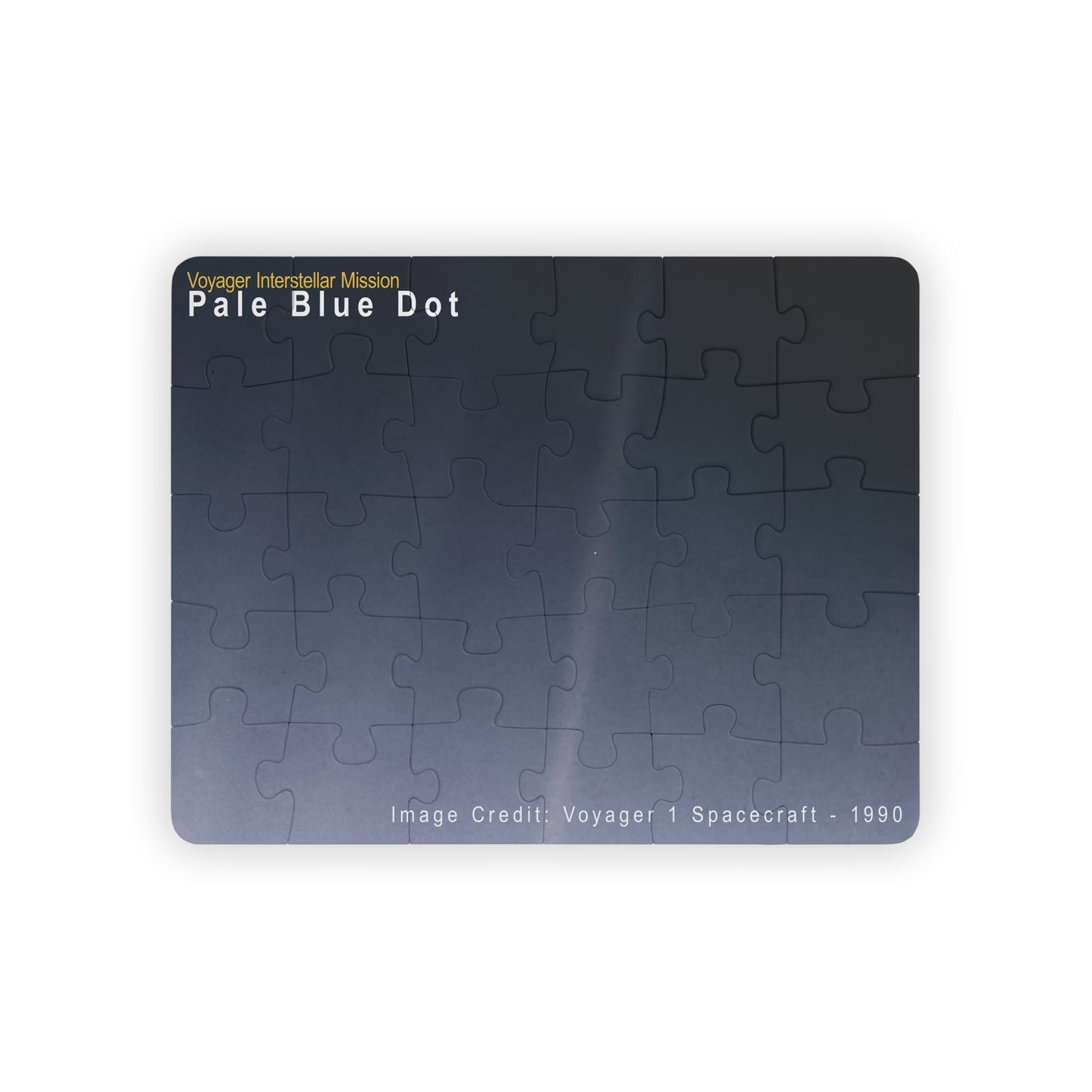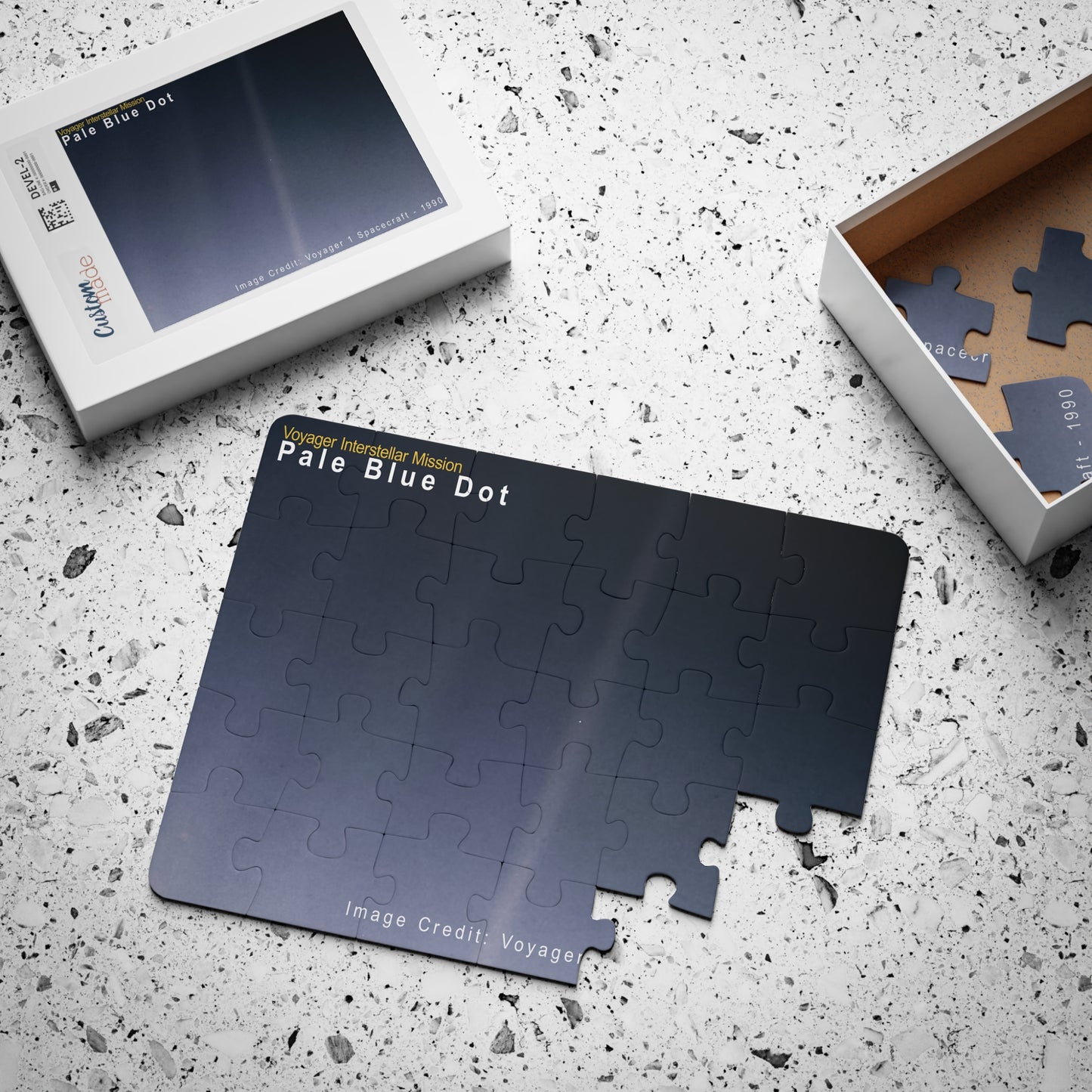Pale Blue Dot, Kids' Puzzle
Pale Blue Dot, Kids' Puzzle
Couldn't load pickup availability
Blast off into learning and fun with our Galaxy Puzzles!
Puzzles are an all-time favorite activity, and with your custom ideas, you can help youngsters have quality time by solving their own personalized kids' puzzle. Each puzzle is available in a toddler-friendly 30-piece pack featuring large pieces and rounded corners for added safety and peace of mind for parents. Each puzzle is made from chipboard and includes a reference photo to aid in solving the problem.
Material: laminated chipboard
One size: 30-piece puzzle - 14" x 11" (35.6 x 28cm)
Rounded corners
Comes in a box with a reference photo
Pale Blue Dot:
Voyager 1 - 1990
The view was obtained on February 14, 1990, just minutes before Voyager 1's cameras were intentionally powered off to conserve power, as the probe — along with its sibling, Voyager 2 — would not make close flybys of any other objects during their lifetimes. Shutting down instruments and other systems on the two Voyager spacecraft has been a gradual and ongoing process that has helped enable their longevity.
Spacecraft: Voyager 1 (as part of the Voyager program, which also includes Voyager 2).
Date Taken: February 14, 1990.
Distance: Approximately 3.7 billion miles (6 billion kilometers) from the Sun, past the orbit of Neptune.
What it shows: Earth appears as a tiny, single-pixel point of light within a ray of scattered sunlight.
Significance: The photograph was taken at the suggestion of astronomer Carl Sagan, who was a member of the Voyager imaging team. He championed the idea of turning the camera back for one final image before turning the cameras off forever to conserve power.
Legacy: The image inspired the title of Sagan's 1994 book, Pale Blue Dot: A Vision of the Human Future in Space, in which he famously wrote:
"Look again at that dot. That's here. That's home. That's us." The photograph is a powerful reminder of Earth's fragility and its place as a "lonely speck in the great enveloping cosmic dark."
Image Credit: NASA
Share






